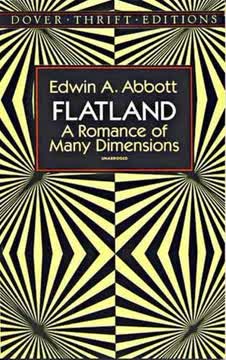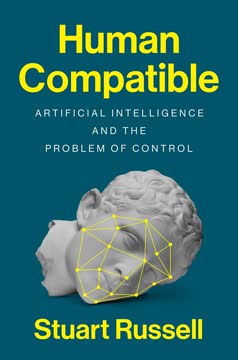Key Takeaways
1. Truth, beauty, and goodness face challenges in the postmodern, digital era
Our classical virtues, however, have been pummeled by developments in our era.
Postmodern critique challenges the legitimacy of truth, beauty, and goodness, arguing that they merely reflect power structures. This skepticism undermines traditional notions of absolute virtues.
Digital media further complicate matters by:
- Providing a mélange of claims and counterclaims
- Blurring lines between fact and fiction
- Enabling constant revision of information
- Creating an unregulated ethical landscape
These forces combined create a chaotic state where determining truth, appreciating beauty, and defining goodness become increasingly complex tasks.
2. Truth is not absolute, but converging truths can be established
We can be ever more confident that truths exist in several spheres.
Multiple truths exist across different disciplines and professions. While absolute truth may be elusive, we can work towards establishing well-founded truths through:
- Careful observation and experimentation
- Rigorous peer review and debate
- Convergence of evidence from multiple sources
Truths in science, history, and practical crafts are continually refined and updated. The goal is not to find a single, unchanging truth, but to move steadily towards more accurate and comprehensive understandings of reality.
3. Beauty evolves from traditional canons to individualized experiences
Beauty merits a separate entry, in my view, because it entails the physiological and psychological "tingle" noted above—one distinct from the reactions of either mere interest or an inclination to revisit.
Evolving concept of beauty:
- Traditional notions of beauty (harmony, balance, fidelity to appearance) are no longer sufficient
- New criteria: interestingness, memorability of form, invitation to revisit
- Beauty becomes a more personal, individualized experience
Factors influencing beauty perception:
- Historical and cultural context
- Personal experiences and preferences
- Exposure to diverse artistic forms and media
The digital age enables unprecedented access to a wide range of aesthetic experiences, allowing individuals to develop unique "portfolios" of beauty preferences.
4. Goodness encompasses neighborly morality and the ethics of roles
On the definition I've introduced here, assessments of what is "good" (or "not good") apply to human relations: the relations that govern how we human beings act toward one another, locally and globally.
Two aspects of goodness:
-
Neighborly morality:
- Local, long-evolving set of principles
- Governs interactions with family, friends, and immediate community
- Relatively stable across cultures and time
-
Ethics of roles:
- Pertains to complex societies and professional contexts
- Addresses responsibilities as workers and citizens
- Evolves more rapidly in response to societal changes
The challenge lies in balancing these two aspects, especially as global interconnectedness increases and professional roles become more complex.
5. Postmodernism and digital media reshape our understanding of virtues
The postmodern critiques and the digital media have independent origins and histories, and yet they make strong and powerful bedfellows.
Postmodernism challenges traditional notions of virtues by:
- Questioning the existence of absolute truths
- Emphasizing cultural relativism
- Deconstructing established power structures
Digital media impact virtues through:
- Democratization of information and artistic creation
- Blurring lines between creator and consumer
- Enabling rapid dissemination and alteration of ideas
Together, these forces require a reevaluation of how we define and pursue truth, beauty, and goodness in the contemporary world.
6. Early childhood development shapes perceptions of truth, beauty, and goodness
From infancy, she observes the regularities in her world (where and when the parent appears, how food is prepared) and the irregularities (an absent parent, an unexpected form of nourishment, a surprise visit from a stranger).
Early foundations:
- Children develop basic understandings of truth through practical experiences
- Moral sense emerges through interactions with caregivers and environment
- Aesthetic preferences begin to form based on exposure and cultural context
Key developmental milestones:
- Theory of mind (understanding others' beliefs)
- Distinguishing between moral and conventional rules
- Recognition of artistic intention and form
These early experiences and developmental stages set the stage for more complex engagements with the virtues later in life.
7. Adolescence marks a critical period for reevaluating virtues
With respect to truth, adolescents begin to challenge the culture's code, often adopting a complete, almost a perverse relativism.
Adolescent challenges:
- Questioning established truths and authority
- Exploring diverse aesthetic experiences
- Grappling with complex moral and ethical dilemmas
Digital influence:
- Exposure to vast amounts of information and perspectives
- Navigating online identities and relationships
- Confronting ethical issues in digital spaces
This period of development is crucial for forming more nuanced and personal understandings of truth, beauty, and goodness, often in tension with established norms.
8. Lifelong learning is essential for adapting to changing notions of virtues
Learning ceases to be the targeted burden of childhood and adolescence; it becomes the privilege—but also the obligation—of an entire lifetime.
Continuous adaptation is necessary due to:
- Rapid technological advancements
- Evolving social and cultural norms
- Expanding global interconnectedness
Strategies for lifelong learning:
- Engaging with diverse perspectives and experiences
- Developing critical thinking and synthesis skills
- Remaining open to revising long-held beliefs
The ability to continually reassess and refine one's understanding of truth, beauty, and goodness becomes increasingly important in a rapidly changing world.
9. Interdisciplinary approaches are crucial for understanding the virtues
At various points and in various places, I have drawn on history and prehistory; biology and evolutionary psychology; sociology and anthropology; humanistic scholarship; and three strands of philosophy—epistemology, aesthetics, and ethics.
Benefits of interdisciplinary approach:
- Provides a more comprehensive understanding of complex issues
- Reveals connections and patterns across different domains
- Challenges oversimplified or reductionist explanations
Key disciplines for studying virtues:
- Philosophy (for conceptual foundations)
- Psychology and neuroscience (for cognitive and emotional aspects)
- Anthropology and sociology (for cultural variations)
- History (for understanding changes over time)
- Arts and humanities (for exploring aesthetic and moral dimensions)
By integrating insights from multiple fields, we can develop a richer and more nuanced understanding of truth, beauty, and goodness in the contemporary world.
Last updated:
Review Summary
Truth, Beauty, and Goodness Reframed receives mixed reviews, with an average rating of 3.50. Some praise Gardner's insights on postmodern challenges to these virtues, while others find the book repetitive or lacking depth. Readers appreciate Gardner's attempt to address important philosophical questions but criticize his writing style and perceived lack of practical applications. The book's strongest sections are considered to be those on child development and pedagogy. Critics argue that Gardner's perspective is outdated and fails to fully engage with contemporary issues.
Similar Books








Download PDF
Download EPUB
.epub digital book format is ideal for reading ebooks on phones, tablets, and e-readers.










